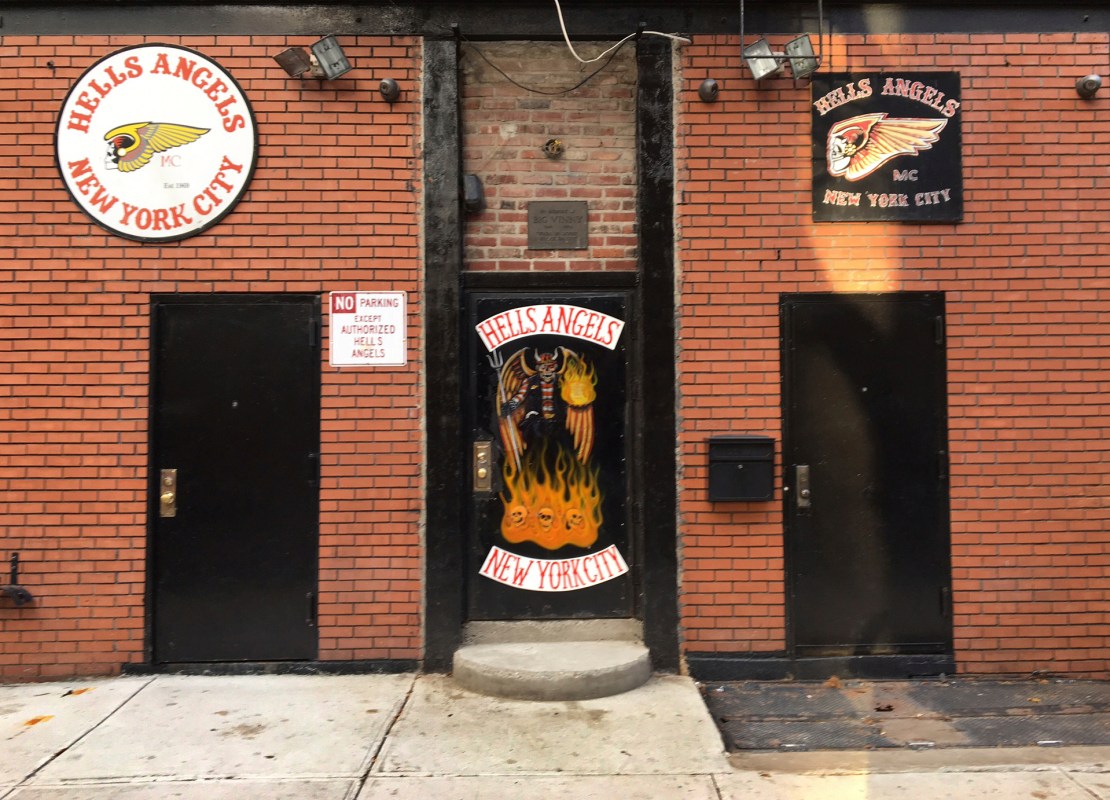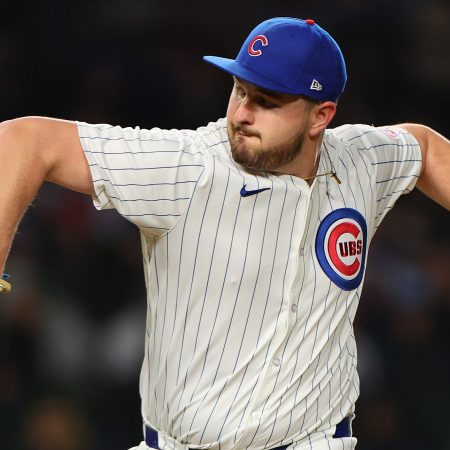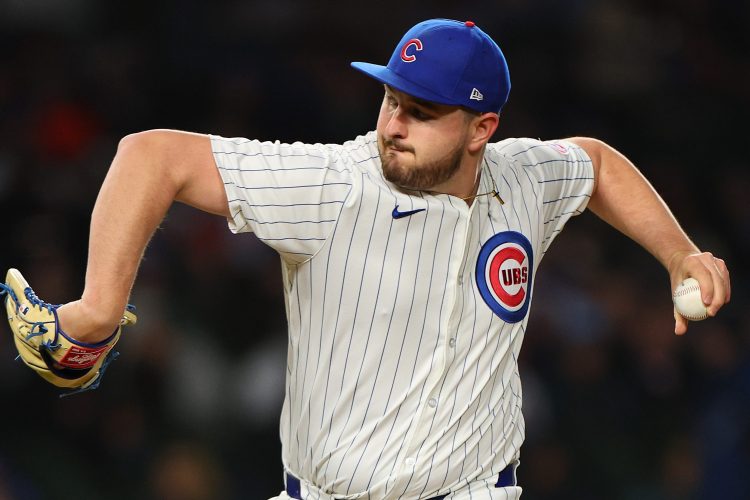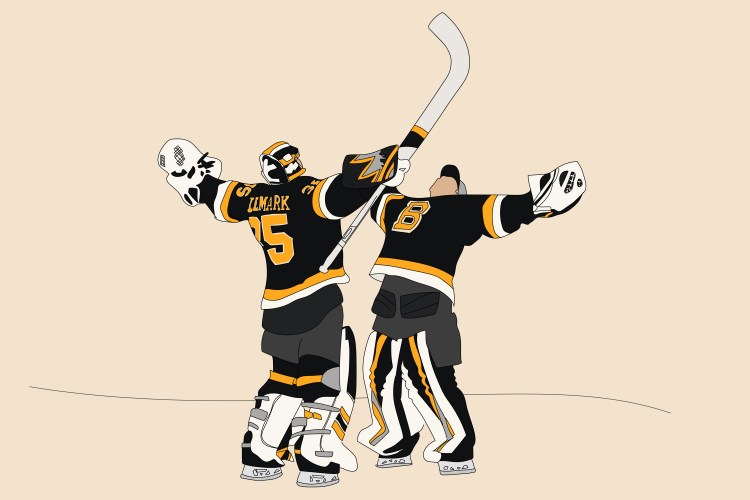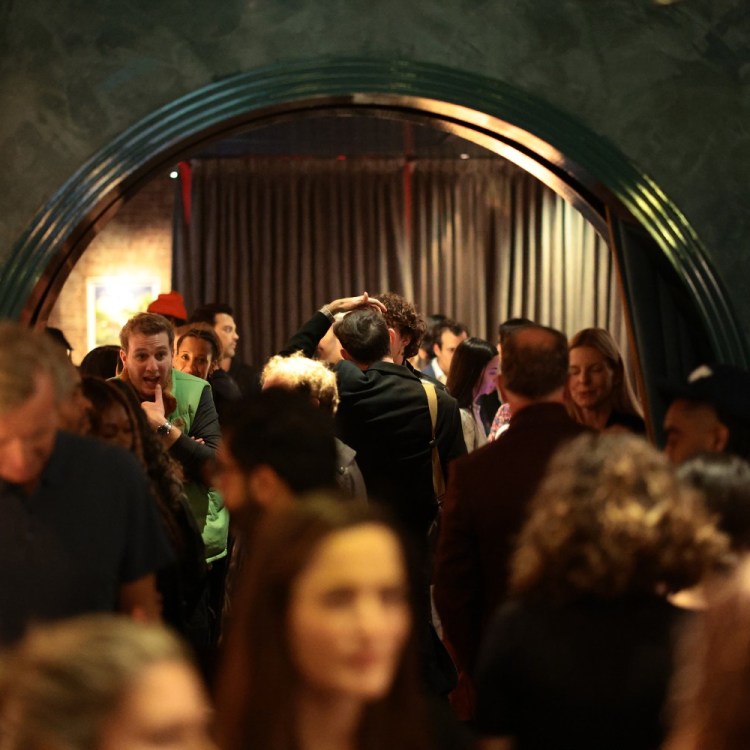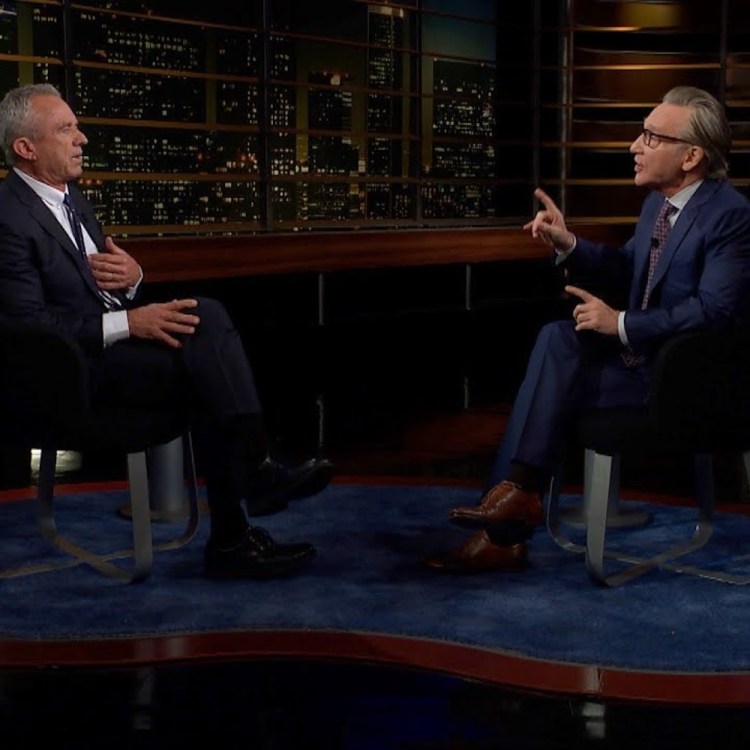In the early hours of December 11, 2016, while cruising New York City’s East Village neighborhood, 25-year-old David Martinez and his friends encountered a problem. Driving down E. 3rd Street, the group suddenly found themselves stuck behind a livery cab. Noticing an orange parking cone obstructing their way around the cab, Martinez hopped out of the passenger side door of his black Mercedes-Benz in order to move the cone and squeeze by the livery cab.
Unfortunately for Martinez and his companions, that cone had been deliberately placed there by the notorious Hells Angels Motorcycle Club, who have long called that stretch of 3rd Street between First and Second avenues home. The club’s illegal practice of saving spaces for motorcycles in front of their East Village clubhouse was common knowledge for those in the local know, but one with potentially deadly consequences for the uninitiated.
A melee ensued over the cone, as Martinez and his friends clashed with a handful of Hells Angels members. It was then that Anthony Iovenitti – a security guard and reported “prospect” with the club – pulled a firearm and shot Martinez in the stomach.
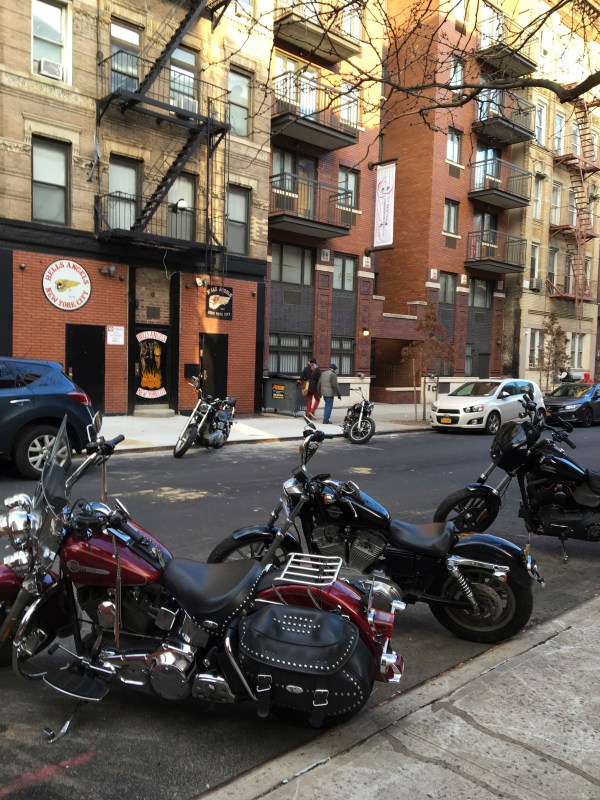
It’s like this, in clashes over turf or treasure – or, in this case, a parking cone – that the Hells Angels, along with other outlaw motorcycle clubs, so often enter and depart our public consciousness. So ubiquitous now are these bands of bearded, leather-clad bikers on the highways and country back roads of the United States that it is difficult to recall a time when the Hells Angels were once feared and reviled by much of the country, law enforcement especially. It’s only when these so-called 1 percenters – a label of disrepute intended by the American Motorcycle Association to distinguish the majority of riding enthusiasts from the ruffians – emerge and exchange fists and gunfire that the well-crafted, almost Rockwellian modern image of the biker bad boy is shattered. But as its members have aged and become increasingly mainstream, so too, in many ways, has the infamous gang, which now also does brisk business in merchandise sales to the public and is increasingly voicing its opinion in the establishment world of presidential politics.
Martinez survived the experience, but Iovenitti ironically enough did not, suffering a fatal brain aneurysm just months later while on trial for the shooting. Of his client, defense attorney Ron Kuby said that Iovenitti “died doing what he loved most, riding motorcycles with his brothers.”
Glitz and Bike Grease
Nearly everything about the Hells Angels is subject to debate, from the club’s origin story – formed first in the San Bernardino, California, area by adventure-seeking World War II veterans – to the roots of the group’s name: The Angels now insist it to be an ode to the 303rd Bombardment Group made famous for its participation in the European theater; others suggest that it may be a nostalgic nod to Howard Hughes’ 1930 film “Hell’s Angels.”
Of course, there has always been a touch of big-screen magic and marketing to the Harley-powered machinery and machismo that defines the Hells Angels, dating all the way back to Marlon Brando’s 1953 film The Wild One. A romanticized dramatization of the now infamous – and largely apocryphal – 1947 biker bust-up in Hollister, California, Brando’s heroic portrayal of righteous and rebellious motorcycle culture did in many ways for outlaw bikers what “The Godfather” parts one and two did for Sicilian wise guys during the 1970s: provide a sense of swagger and purpose.
Brando had a knack for capturing the angst of the most marginal among us, but so too did Hells Angels forefather Ralph “Sonny” Barger. Arguably an heir to the first wave of Hells Angels motorcycle clubs formed after the Second World War, Barger understood early on that there was a great deal of public appeal in the organization’s iconoclastic lifestyle and image. Much like Billy the Kid and John Dillinger, Americans love a bit of larceny in their lives, especially of the vicarious variety. Barger founded the Hells Angels’ powerful Oakland chapter in 1957, but his place in the organization worldwide is so much larger. He has authored several books, and has even dabbled in his own acting career; first alongside Jack Nicholson in 1967’s Hell’s Angels on Wheels, and later in life with a cameo role in the hit FX TV series Sons of Anarchy.
Barger excelled at walking the fine line between felon and fame, and his Angels enjoyed during the 1960s a cultural crossover with California’s most prominent beatniks, even notably partying and dropping acid with “One Flew Over the Cuckoo’s Nest” author Ken Kesey and his Merry Pranksters. This biker-bohemian meeting of the minds was short-lived, however. On Oct. 16, 1965, members of the Oakland chapter accosted and clashed with anti-Vietnam War protesters marching near the Berkeley-Oakland border, some reportedly shouting “America first!” This violence generated a panic among the area’s antiwar movement, even inspiring a written appeal to the Angels by flower-power poet laureate Allen Ginsberg, whom the motorcycle club had taken an uncharacteristic liking to. The following month, when it was feared that the Angels might bust up yet another peace march, Barger and his cohort held an almost comical press conference from the club’s bail bondsman’s office, during which Barger called the members of the Vietnam Day Committee a “mob of traitors” and volunteered the Angels’ services against the Viet Cong. The Hells Angels took a step back from the culture wars that day, but the worst was yet to come.
On Dec. 6, 1969, on the heels of the highly successful Woodstock Music Festival earlier that year, the Rolling Stones, Grateful Dead, and a number of other musical acts joined to hold a free concert at northern California’s Altamont Speedway – a Woodstock West, so to speak. The atmosphere at Altamont was far more hostile than that of Woodstock, however, compounded by the presence of a large faction of Hells Angels members, who had been paid by the Stones – in beer, many say – to serve as concert security.
The hostility in the air at Altamont was perhaps best captured in the 1970 rock documentary “Gimme Shelter,” in which periodic confrontations between hippies and Angels at Altamont were chronicled, culminating in the stabbing death of 18-year-old Meredith Hunter at the hands of a Hells Angel Alan Passaro.
Hells Angels, Inc.
Today the Hells Angels boast several hundred chapters all around the world, though the Justice Department suggests more modest numbers. Nevertheless, that marketable brand of rebellion is something that the organization covets and defends with aggressive prejudice. In the past, this may have resulted in violent confrontations over turf with rival clubs, or the absorption of smaller ones, a corporate-raider tactic sometimes referred to as “patching over.” But in the 21st century, the Hells Angels are much more than the sum of their many chapters and inductees: They are a global business, and one that is supported, according to the Federal Government, by racketeering, prostitution, and narcotics.
Retail and apparel have become another important element of the Hells Angels’ business model, and it’s not uncommon to find various forms of support gear available for purchase on an individual chapter’s website. In this realm, intellectual property lawyers take the place of chains and ax handles. The Angels’ litigious ways are indeed well-documented, and seemingly unbound. In 2012, for example, the organization sued now-defunct retailer Toys “R” Us for selling yo-yos featuring the club’s famous “Death Head” logo. The two parties eventually settled.
That Sonny Barger – who served five years in federal prison for conspiring to blow up a rival gang’s clubhouse – remains so revered not only among his fellow Angels, but across the motorcycle-riding community, speaks to the enduring appeal of the rebel lifestyle first cultivated in California’s coastal towns and country roads. In 2010, while sitting in for a book signing at a Harley-Davidson dealership in the New York City suburb of New Rochelle, Barger was feted like a king, and bikers and fans, 1 percenters and civilians alike, reportedly lined up for hours, to receive autographs and take pictures with the Hells Angels royalty.
Ironically enough, the Justice Department was, at that very moment, building a case against several members of the New Roc City Hells Angels Motorcycle Club, on charges ranging from racketeering and drug trafficking to assault and unauthorized motorcycle alterations. Six members were eventually indicted in March 2017, with most pleading guilty to a variety of charges earlier this year.
A Boomer Rebellion
Hells Angels members and their fans – often referred to as “support 81,” a metonym alluding to the letters “H” and “A” – take umbrage with the Justice Department’s characterization of the group as an international criminal conspiracy. What individual members of the organization’s supposedly decentralized clubs do is their business, and to Barger and the many Angels who idolize him, their right to freely associate and lead lives of radical individualism are constantly, and unjustly, under attack from the government.
Outlaw bikers claim that the wars of the Bush and Obama years have only helped to replenish their ranks with younger and more socially established veteran recruits. The evidence of this is largely anecdotal, but speaks to something salient about biker culture in such a tribal moment in American history. In his seminal book on the gang, “Hell’s Angels,” gonzo journalist Hunter S. Thompson envisioned a dystopian future in which the motorcycle club would be mostly comprised of respectable middle-class Americans with mortgages and 9-to-5 jobs – disgruntled pensioners who bemoan the deleterious effects of some other miscreant band in their communities, such as the Kiwanians.
While Thompson was prone to these kinds of absurdist premonitions, in this instance he wasn’t too far off. The median age of bike owners in the United States has jumped from 32 to 47 in the past quarter-century, forcing motorcycle manufacturers to broaden their marketing efforts beyond the bad-boy stereotypes of old. This includes riders who share in the traditionalist sensibilities of outlaw bikers while eschewing their criminal behavior, such as cops and military veterans. Law enforcement motorcycle clubs are quite common nowadays, and they often intermingle with the more old school 1 percenters.
More traditional outlaw bikers insist that this is nonsense, of course, and many continue to hold law enforcement – especially that of the federal persuasion – in deep suspicion. But the lines have blurred with time.
Outlaw in Chief
In the summer of 2016, Sonny Barger announced his support for Donald Trump for president, explaining that Trump was a kindred spirit in the long war against a rigged system in which government and the media conspire against citizens who step out of line. In Trump, the baby-boom bikers who count themselves among America’s so-called forgotten men found an ally and a politically incorrect truth-teller. And while the president’s recent tit for tat with Harley-Davidson has undoubtedly alienated more than a few outlaws, today bikers – law-abiding and outlaw alike – see in the White House a president surrounded by undue speculation and spectacle; one under federal investigation and media inquisition, standing athwart history to preserve the American way of life.
The president’s appeal expands beyond that of the 1 percent, and well into the broader majority of motorcycle enthusiasts. The organization Bikers for Trump, for instance, claims hundreds of thousands of members nationwide, and even a political action committee with dreams of one day being as politically influential as the National Rifle Association.
The Hells Angels were and remain, as Thompson described, an organization always “fighting against the future.” For Barger and many of his biker brethren, Trump represented the change that they sought to see in a world of squares and deep-state bullies. And much like Trump, for the Hells Angels and other boomer bikers the time to stand up to the progressive march of history – pushing back against grievances both small and large, from parking cones to U.S. politics – is now.
This article was featured in the InsideHook newsletter. Sign up now.
